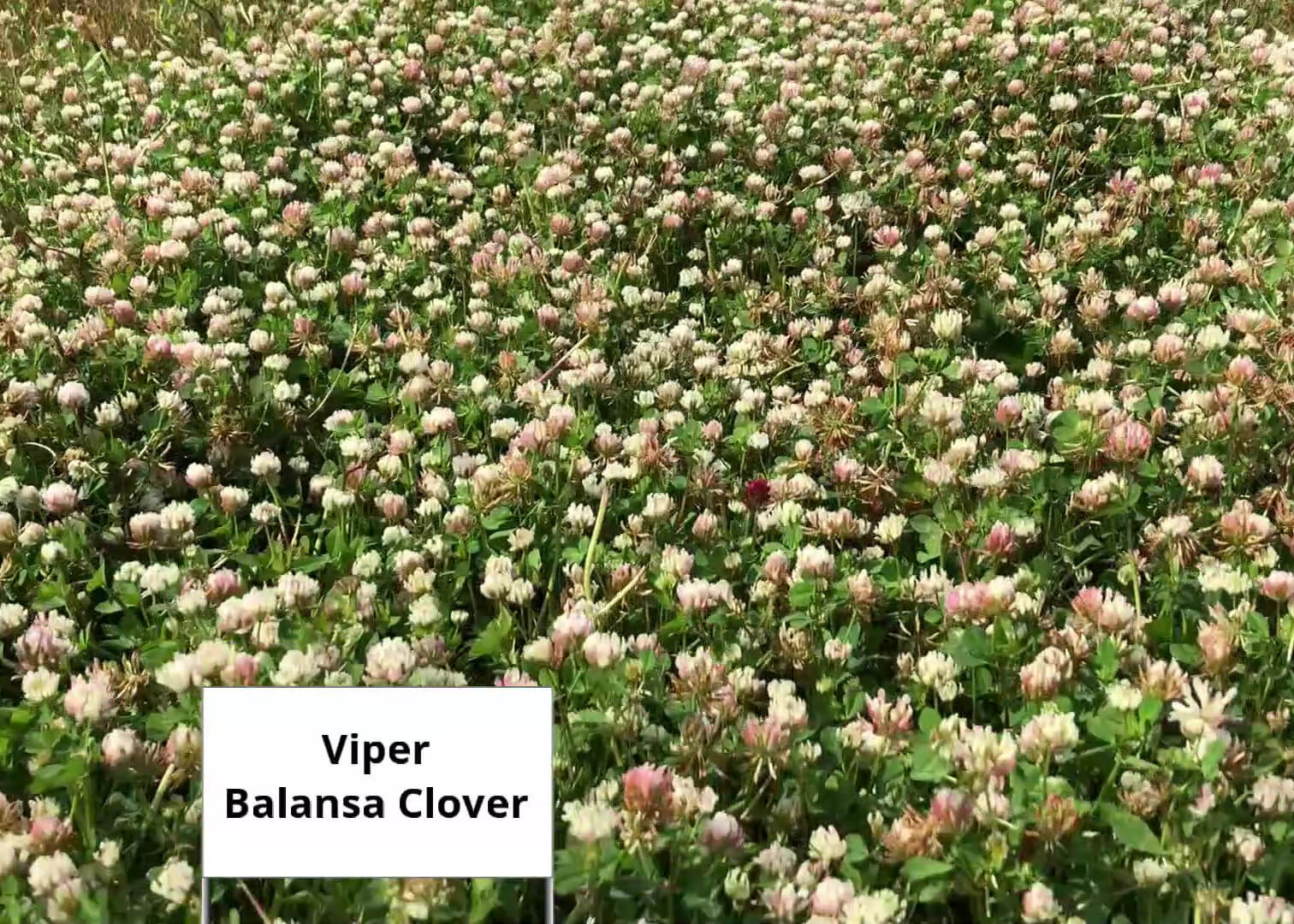TREMENDOUS TOLERANCE
Viper balansa performs well in an extremely wide range of soils, tolerating pH levels from 4.5-8.3 and able to survive in waterlogged soils and short periods of flooding.
GROWS LIKE NO OTHER
Viper is quick to germinate, with better vigor/earlier growth than some other balansa varieties. Initially, Viper forms a small, multi-branched rosette emerging from a single, deep taproot. Under a grazing regime, Viper will remain prostrate. However, allowed to grow, Viper’s stems will eventually turn upright, forming a multi-branched hollow stem with copious amounts of plant mass up to three feet high. As the plant matures, it will continue to grow and produce blossoms that are very attractive to pollinators. Allowed to seed, Viper is capable of producing large amounts of regenerative hard seed viable up to three years.
MULTIPURPOSE
Cover Crop – Viper’s nitrogen production, soil-building root structure, and extensive biomass production make it a top choice for adding to a cover crop mix. Viper can be combined with grasses, brassicas and other legumes. Balansas have been shown to fix over 100 lbs. N/acre per year. Viper, in particular provides that N earlier, due to its earlier maturity.
Forage – Viper can be frost seed or broadcast into existing pastures to boost protein levels of forage, while contributing nitrogen to other crops. With excellent digestibility and protein levels in the upper 20’s, Viper is an ideal component in a small grain/grass/legume sward that can be harvested by grazing, hay or silage. Use with other non-legumes will reduce bloat potential.
Pollinator/Wildlife – Viper produces abundant flowers. Honeybees and other pollinators love it and so do the deer!
VIPER PLANTING INFORMATION
Before you plant. Viper balansa can grow over an extremely wide range of soils tolerating pH levels from 4.5-8.3. It is quite tolerant of waterlogged soils and can even withstand short periods of flooding. For best performance, saline and drought soils should be avoided. Seeding into deep, sandy soils or soils prone to drought is not recommended.
For optimal performance, conduct a soil test and follow the recommended lime and fertilizer recommendations. In established pastures, remove excess forage through grazing or late season haying. This will help ensure successful seedling emergence and establishment. Reduce weed population prior to planting. Be aware of herbicide carryover/residual of chemicals applications prior to planting.
When to plant. All cool-season clovers, including Viper, need time to establish before harsh weather arrives. In the lower Southern USA, the best time to plant is late fall. In the upper South, plant mid-late fall or early spring. In the North, plant early fall or early spring. Frost seeding also works well. If planting during other times, reseeding may be necessary to achieve an optimal stand. Viper may winterkill in areas with harsh, open winters.

